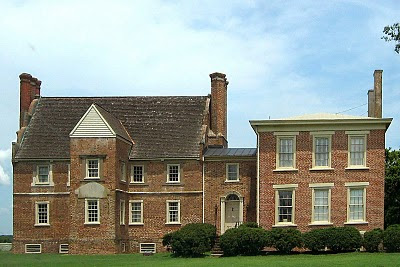The Rebellion Close to the Holyman Plantation
By the fall of 1676 Nathaniel Bacon's revolt had attracted hundreds of adherents, some who took delight in ransacking the homes and plantations of wealthy planters. A few of the rebels were of the planter class themselves, the most visible to history being one William Byrd, whose descendants would prosper financially, leave diaries and a political dynasty. (In the 1700s one Mary Byrd of this family would marry a grandson of Christopher, Sr.)
Other rebels, hundreds of young men in fact, were indentured servants and African-American slaves, an interesting mingling of persons, generally of a less economically prosperous class. The presence of armed Blacks during this period would later result in the House of Burgess passing highly restrictive slave codes in Colonial Virginia. As far as this writer knows this would be the last time that poor whites and Blacks would make common cause against a white power structure in Southern history prior to the Civil War. For the next several hundred years, white racial prejudice would overwhelm the common economic interests these two groups could have shared .
Isle of Wight and neighboring Surry County produced both supporters of Bacon and defenders of Governor Berkeley. Historian John Boddie in his work 17th Century Isle of Wight records numerous conflicts amongst neighbors and the forces of the Crown and the rebellion. A Major Arthur Allen, a prominent Crown supporter, fled his home near the James River, not fifteen miles north east of the Holyman plantation. Constructed in 1665, and still one of the finest examples of 17th Century Jacobian architecture remaining in the western hemisphere, the home was occupied for four months in 1676/77 by William Rookings, other commanders and up to seventy supporters of Bacon.

The rebellion collapsed in the late fall of 1676 after Bacon died of dysentery, and his body buried in the York River. Allen recovered the home in 1677 and later sued the occupants of his home for damages. This wealthy neighbor of the Holymans would not doubt be angry that his residence has become known as 'Bacon's Castle' after his nemesis! Today the home is on the National Register of Historic Places, is administered by the Association of the Preservation of Virginia Antiquities and is open to the public. Google Bacon's Castle and view the home and read its history.
Bare in mind, this is one of the few examples of 17th Century brick construction surviving in North America. The Holymans and 99% of other Virginians at the time were living in unpainted wooden structures that in a short time disappeared to natural decay or fire. Virtually no 17th structures remain in Virginia. Bacon's Castle is one of the few.
During your next trip to Jamestown and Williamsburg, do cross west over the James River, visit the museum in Smithfield, the Holleman home near the Mill Swamp Baptist Church in Isle of Wight County and nearby Bacon's Castle.
Next posting, the Empire Strikes Back!








No comments:
Post a Comment